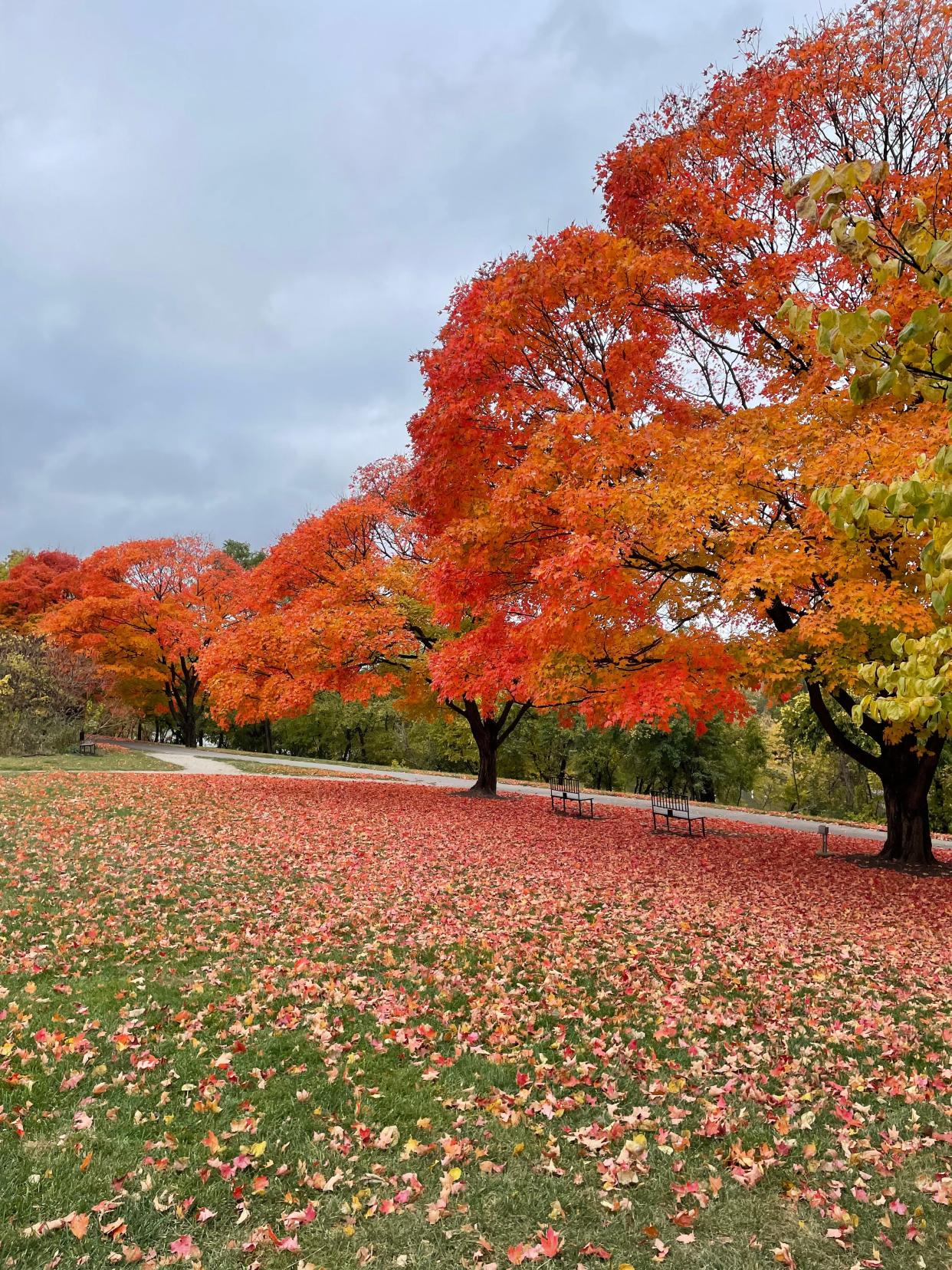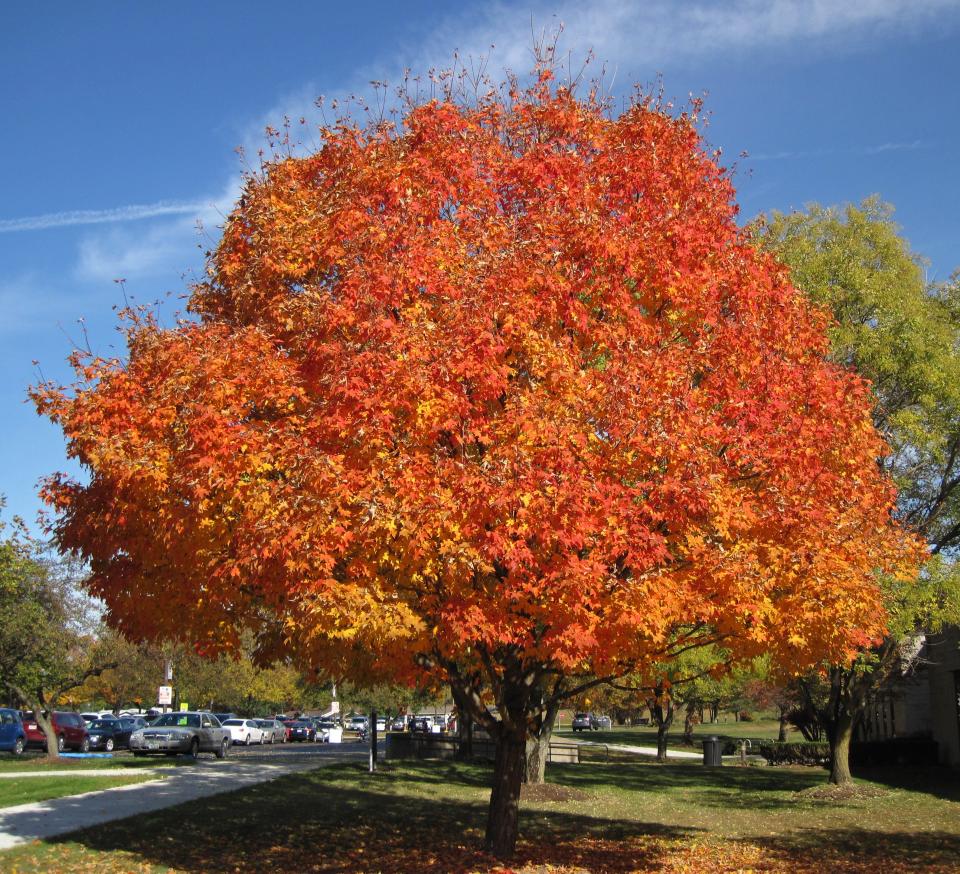Native plant: Sugar maples provide shade, syrup and stunning scenery

Editor’s note: Once a month, OSU Extension Master Gardener volunteers in Franklin County profile a plant that occurs naturally in central Ohio.
If you want to add a large shade tree to your landscape, a sugar maple is an excellent choice. Well-known for its beautiful and reliable fall foliage, it is famous as well for maple syrup. Don’t plant the tree with thoughts of making maple syrup anytime soon, though; you’ll need to wait until the tree is 40-50 years old before tapping it for sap.
Sugar maple (Acer saccharum) is the main component of the eastern hardwood forest and one of the trees most responsible for New England’s fall color. It is extremely shade-tolerant in its youth but must eventually grow into full to partial sun. It prefers a cooler climate and does best in large lawns, parks and in groups. It has a single, short trunk, ascending branches, with a narrow crown. It can grow 40 to 80 feet tall and spread up to 60 feet. A slow-growing tree, it can live 300 to 400 years. It is not tolerant of compacted soil or road salt, so plant it away from sidewalks and streets.
Native plant: Wild ginger suited to damp, shady spots in the garden
In the spring, pale, yellow flowers dangle on stalks. However, the tree doesn’t flower until it is 22 years old! The green leaves have three to five lobes, oppositely attached, with pointed tips. They turn shades of orange, red and yellow in the fall. The bark is gray and scaly with furrows and ridges.

Sugar maples attract 297 species of butterflies and moths, providing a source of food for baby birds and other insect-eating birds. The two-winged seeds, known as samaras, are eaten by wildlife. The sap attracts birds and insects.
Sugar maples are a great alternative to Norway maples, a non-native tree with invasive tendencies. Sugar maple leaves break down quickly if left on the ground and provide a good natural fertilizer.
Native plant: More than a mascot or candy, buckeye a decorative shade tree
Other names for this tree are hard maple and rock maple due to its dense and fine-grained wood prized for furniture, flooring, cabinets, musical instruments and campfires.
As for maple syrup production, Native Americans invented the process that is now a multi-billion-dollar industry in the U.S. and Canada.
Growing conditions
Hardiness zones: 4 to 8
Sun: full sun to part shade
Water: medium
Soil: fertile, slightly acidic, moist
Maintenance: medium
Propagation: grafting, cuttings, seed
Pests and diseases: susceptible to verticillium wilt, anthracnose, cankers, leaf spot and tar spot; also, aphids, borers and scale. Leaf scorch will occur in drought.
This article originally appeared on The Columbus Dispatch: Sugar maple tree known for fall colors and maple syrup

